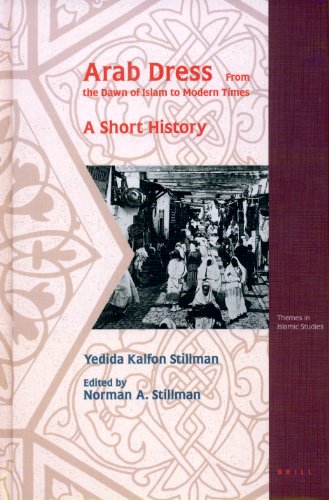

Most ebook files are in PDF format, so you can easily read them using various software such as Foxit Reader or directly on the Google Chrome browser.
Some ebook files are released by publishers in other formats such as .awz, .mobi, .epub, .fb2, etc. You may need to install specific software to read these formats on mobile/PC, such as Calibre.
Please read the tutorial at this link: https://ebookbell.com/faq
We offer FREE conversion to the popular formats you request; however, this may take some time. Therefore, right after payment, please email us, and we will try to provide the service as quickly as possible.
For some exceptional file formats or broken links (if any), please refrain from opening any disputes. Instead, email us first, and we will try to assist within a maximum of 6 hours.
EbookBell Team

4.0
56 reviews
ISBN 10: 9004113738
ISBN 13: 9789004113732
Author: Yedida Kalfon Stillman, Norman A Stillman
Part I: The Early and Classical Periods (c. 600-1250)
Chapter 1: The Formative Period: From the Arabian Peninsula to the Abbasid Caliphate
This would cover the pre-Islamic and early Islamic dress, the influence of Byzantine and Sasanian Empires, and the establishment of a distinct Arab-Islamic style during the Umayyad and Abbasid periods.
Chapter 2: The Golden Age: Dress in the High Middle Ages
This chapter would likely focus on the sophisticated and diverse garments of the Abbasid era, including courtly attire, military uniforms, and the clothing of different social classes.
Part II: The Medieval and Early Modern Periods (c. 1250-1800)
Chapter 3: Regional Diversity: From Spain to the Levant
This would explore the different clothing styles that emerged across the vast Arab world, from al-Andalus (Islamic Spain) to Egypt, Syria, and Iraq. It might cover the dress of the Mamluks and other dynasties.
Chapter 4: The Ottoman and Safavid Influence
This chapter would discuss the impact of Ottoman and Safavid rule on Arab dress, including the introduction of new garments, fabrics, and styles.
Part III: The Modern Period (c. 1800-Present)
Chapter 5: European Influence and the Age of Reform
This section would detail the profound changes in Arab dress brought about by European colonialism and modernization movements in the 19th and early 20th centuries.
Chapter 6: Traditional Dress in the Modern World
This chapter would explore the survival and evolution of traditional garments in the face of globalization and Western fashion, including regional variations in the Arabian Peninsula, North Africa, and the Levant.
Chapter 7: The Turban and the Veil
A dedicated chapter on these iconic items of clothing, discussing their historical development, symbolism, and modern controversies.
typical arab last names
arab last names
what is arab short for
arab clothing history
arabic fashion history
arab dress code
Tags: Yedida Kalfon Stillman, Norman A Stillman, Dress, History